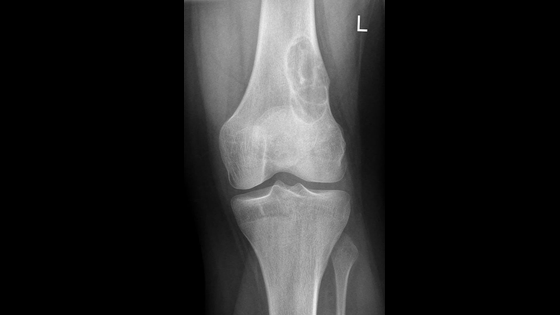Last updated on April 22nd, 2025 at 11:12 am

Do you know that regular stair climbing can reduce your risk of dying from a heart attack? A recent scientific analysis has revealed that regular stair climbers have better chances of living a longer, healthier life by cutting the risk of developing catastrophic cardiovascular disease by 40%.
How can stair climbing help you live longer, and what are its other health benefits? Let us dive deeper into it.
The link between stair climbing and heart health
The latest research has found surprising results linking stair climbing to a longer and healthier life. According to a new meta-analysis presented at the European Society of Cardiology conference, people who climb stairs regularly have a significantly reduced risk of dying from heart attacks and other heart diseases.
The author of the study paper mentioned that this simple-looking stair climbing is a medium-intense exercise that can benefit our cardiovascular health.
The researchers surveyed 480,000 participants and divided them into two groups. One group regularly performed stair climbing, and another did not. The participants’ ages ranged from mid-30s to mid-80s, and half were women. The study included individuals in good health and those with a history of heart disease.
Surprisingly, the participants in the group who performed stair climbing regularly were 39% less likely to die due to heart attack.
But how? Let’s find out.
How stair climbing can save you from heart attack
Stair climbing is an excellent form of exercise that can have numerous benefits for our bodies. As we climb stairs, our muscles, heart, and lungs work together to help us ascend. Our body reacts by following ways to stair climbing:
- Improves blood circulation: As you climb, your blood circulates faster, cleaning your blood vessels and promoting heart health.
- Strengthens your heart muscle: The increased effort required to climb stairs strengthens your heart muscle, making it more resilient.
- Aids in weight management: Climbing stairs burns calories and helps you maintain a healthy weight, a crucial factor for heart health.
- Manages blood sugar levels: Stair climbing can help regulate blood sugar levels, reducing the risk of diabetes, another risk factor for heart disease.
All of these have a positive impact on our cardiovascular health, reducing the risk of deadly heart disease, including heart attack. Interestingly, do you know that your scalp hair can predict the risk of future heart disease?.
Beyond the Heart: Additional Benefits of Stairs
To climb stairs, your leg muscles must pull your body weight to the next step. Therefore, climbing stairs is good for your heart and benefits your lower limbs’ muscles and bones.
Here are the range of other benefits of stair climbing.
- Stronger bones and muscles: One of the most significant advantages of stair workouts is that they can help strengthen your lower body muscles, including your calves, thighs, and feet. As you climb up and down the stairs, your muscles have to work harder, which helps to build strength and endurance. Besides, regular stair workouts can improve bone density, reducing the risk of osteoporosis. By putting stress on your bones through weight-bearing exercises like stair climbing, you can help your bones become stronger and healthier.
- Increased endurance: Regular stair climbing can positively impact your endurance levels. By consistently challenging yourself to climb stairs, your body adapts and becomes more efficient at using oxygen to generate energy. This increased efficiency means walking longer distances without feeling tired or out of breath.
- Weight management: Another essential benefit of climbing stairs is that it can aid in weight management by burning calories.
Important Precautions
As a physical therapist, I will stress taking precautionary measures while climbing stairs, especially if you are older and suffering from knee pain.
Even though it’s generally considered safe, if you have osteoarthritis in your knee, you should be cautious. Follow these recommended steps to ensure your safety and that of your patients.
- Consult your doctor if you have osteoarthritis. People with osteoarthritis may experience knee pain when climbing stairs. For advice on safe exercises, consult your doctor.
- Start slow and listen to your body: Begin with a manageable number of stairs and gradually increase as you get stronger. Pay attention to any pain or swelling in your knees.
- Consider knee support: If you experience knee pain but still want to climb stairs, a knee cap can support and reduce your joints’ stress.
- Alternately, brisk walking is equally beneficial: According to research, regular brisk walking is also can reduce the risk of heart disease and is beneficial for cardiovascular health. Consider brisk walking wearing a kneecap or knee brace on both knees.
Making Stairs a Part of Your Day
Incorporating stairs into your daily routine is a great way to sneak in some exercise without a significant time commitment. Here are some tips:
- Take the stairs at work whenever possible, especially if you don’t need to go very high.
- If you have stairs at home, consider climbing them a few times during the day.
- Look for opportunities to climb stairs throughout your day, even just a few flights at a time.
How much exercise do you need?
The World Health Organization (WHO) advises that adults aged 19 to 64 engage in at least 150 minutes of moderate-intensity exercise per week or 75 minutes of vigorous-intensity activity. To maximize its benefits, this exercise should be spread across four to five days. Try to lead an active lifestyle and reducing sedentary behaviour is crucial for overall health and well-being. However, a Chinese study has found that climate change can sharply increase cardiovascular deaths..
Keep reading: Awkward Snacking Habits can Risk you Heart Disease. Here’s what you need to do
The author is a physiotherapist who has been practising for the last 17 years. He holds a Bachelor's in Physiotherapy (BPT) from SVNIRTAR (Swami Vivekananda National Institute of Rehabilitation and Research), one of the prestigious physiotherapy schools in India.
Whatever he learns dealing with his patient, he shares it with the world through blogs and e-books. He also owns a YouTube channel, "Sunit Physiotherapist" with over 8 lakh active subscribers. Here, he shares everything he gets to learn serving the patient.





